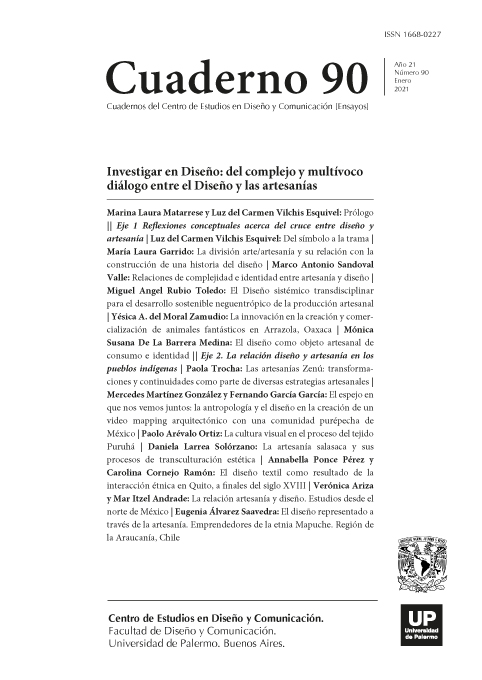La innovación en la creación y comercialización de animales fantásticos en Arrazola, Oaxaca
Abstract
It was economic necessity and the proximity with one of the state of Oaxaca’s most important archaeological sites that sparked awareness for the demand for innovative products amongst the men of the town of Arrazola, who were originally farmers. That spark led them to develop a handicraft tradition that has thrived for the past 80 years. The creation and sale of the carved copal-wood pieces made in Arrazola has led the artisans to develop innovative processes that have undergone transformations over time as needs changed. They taught themselves how to carve, and developed certain shapes over years of isolation, in complete secret, in family workshops in the creators’ houses. Ultimately, that led to clear, distinct styles that have been preserved up to this day. However, political and economic crises have recently forced them out of isolation, and they have instead formed organizations aimed at promoting their members’ pieces. The peculiarity of the Arrazola creations is that they nominally correspond to animals in nature but in actual fact, in terms of shape, colour, and composition, they represent a new reality that exists only in the fantasies of their creators’ minds. Through the power of their imagination, the creators visualize the animal’s form before carving it with a machete and regular kitchen knives and finally decorate it with acrylic paints. The carvers call themselves artisans, and although some of them feel they are the possessors of an art that is a natural gift that comes from divine inspiration, most of them describe the creative process as a complex combination of mental planning enriched by observation, experimentation, and constant effort aimed at coming up with innovation.
References
Arnheim, R. (1979). Arte y percepción visual. España: Alianza Editorial.
Bounarotti, M. (1550). Le lettere. Milanesi.
Bourdieu, P. (2010). El sentido social del gusto. Argentina: Siglo XXI
Bronowski, J. (1979). Los orígenes del conocimiento y la imaginación. Barcelona: Editorial Gedisa.
Csikszentmihalyi, M. (1996). Creatividad. España: Editorial Paidós Transiciones.
Danti, V. (1567). Trattato delle perfette proporzioni, en Trattati d’arte, P. Barocchi, Bari, 1960
Gardner, H. (1995). Mentes creativas. España: Ediciones Paidós.
Lapoujade, M. N. (1988). Filosofía de la imaginación. México: Ed. Siglo XXI.
Marina, J. A. (1993). Teoría de la inteligencia creadora. Barcelona: Anagrama.
Martínez Peñaloza, P. (1980). Tres notas sobre el arte popular en México. México: Miguel Ángel Porrúa
Masouka, S. (1994). “The papier-maché art of the Linares family”, en Calavera. Catálogo de exposición del Fowler Museum of Cultural History. USA: University of California. Ovando
Shelley, C. (2008) “Las artesanías como artífices culturales de la nación,” en La identidad nacional mexicana en las expresiones artísticas. México: UNAM Platon (1959). La República, México: UNAM
Plotino (1955). Eneada V. Buenos Aires: M. Aguilar Editor
Read, H. (1965). Orígenes de la forma en el arte. Argentina: Proyección Rubert de Ventós, X. (1989). Teoría de la sensibilidad. Barcelona: Península.
Tatarkiewics, W. (1997). Historia de seis ideas arte, belleza, forma, creatividad, mímesis, experiencia estética. Barcelona: Ed. Tecnos
Los autores/as que publiquen en esta revista ceden los derechos de autor y de publicación a "Cuadernos del Centro de Estudios de Diseño y Comunicación", Aceptando el registro de su trabajo bajo una licencia de atribución de Creative Commons, que permite a terceros utilizar lo publicado siempre que de el crédito pertinente a los autores y a esta revista.


